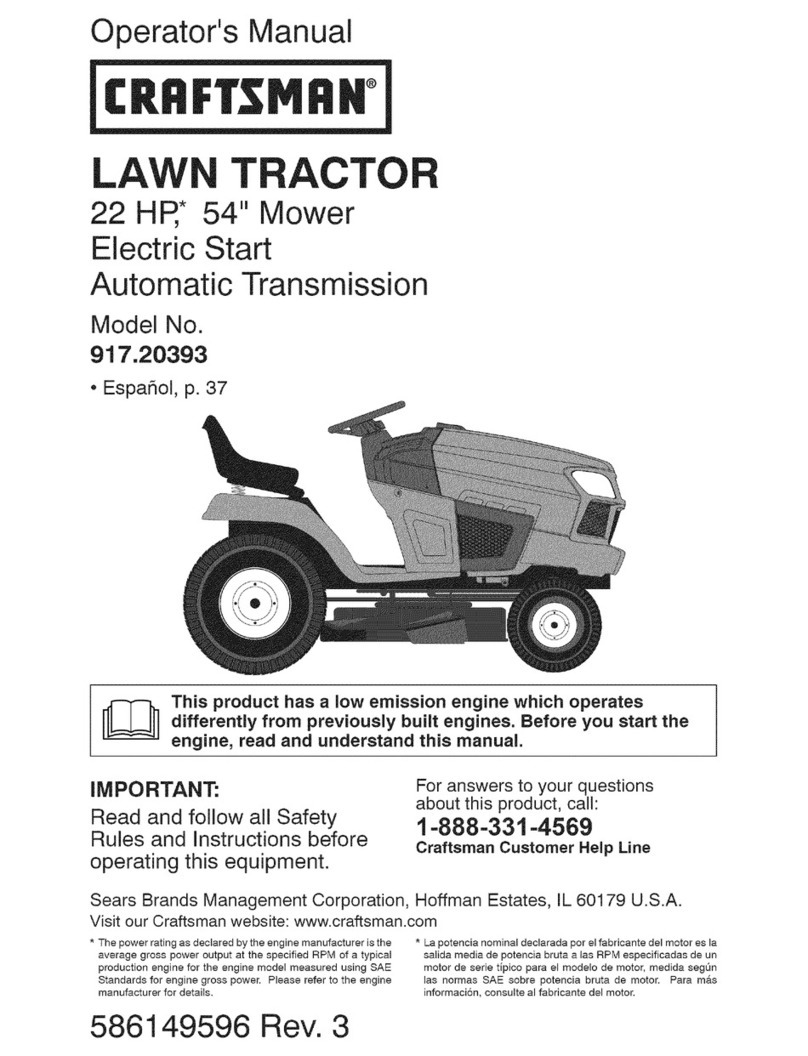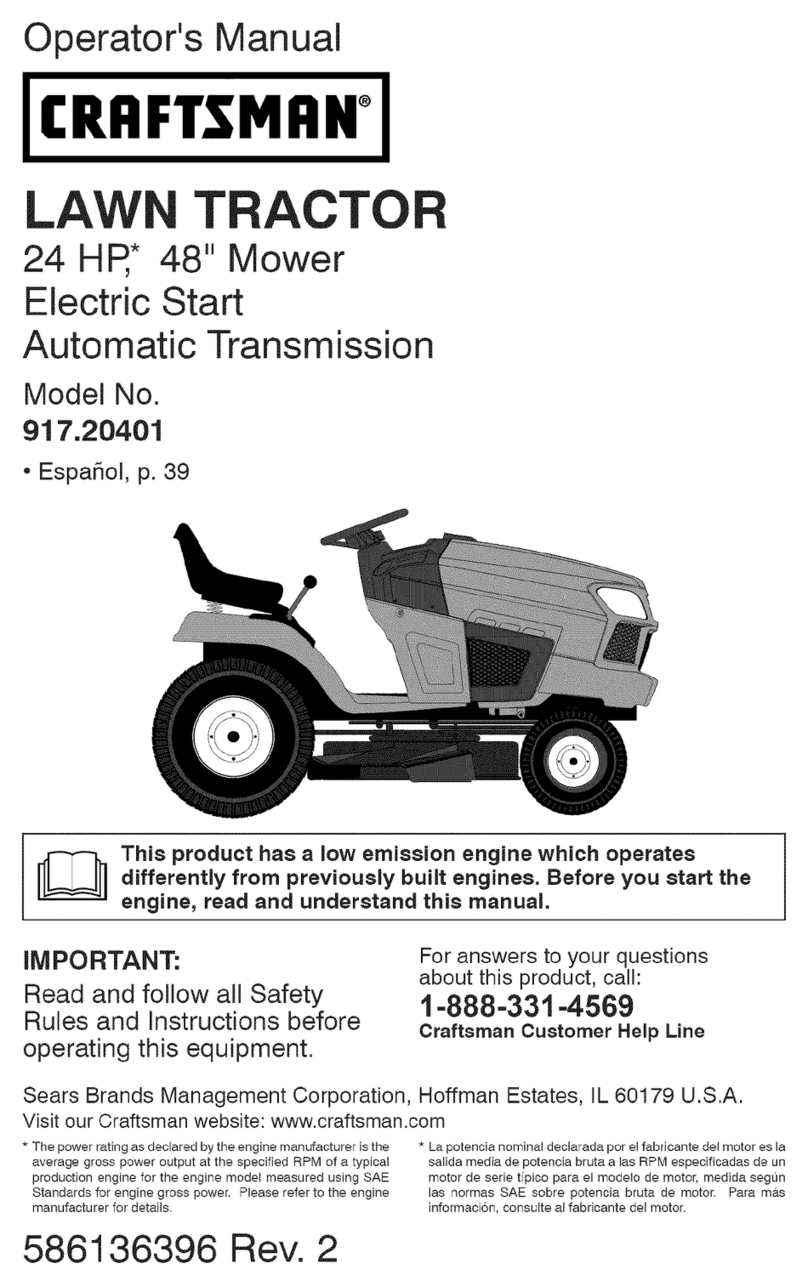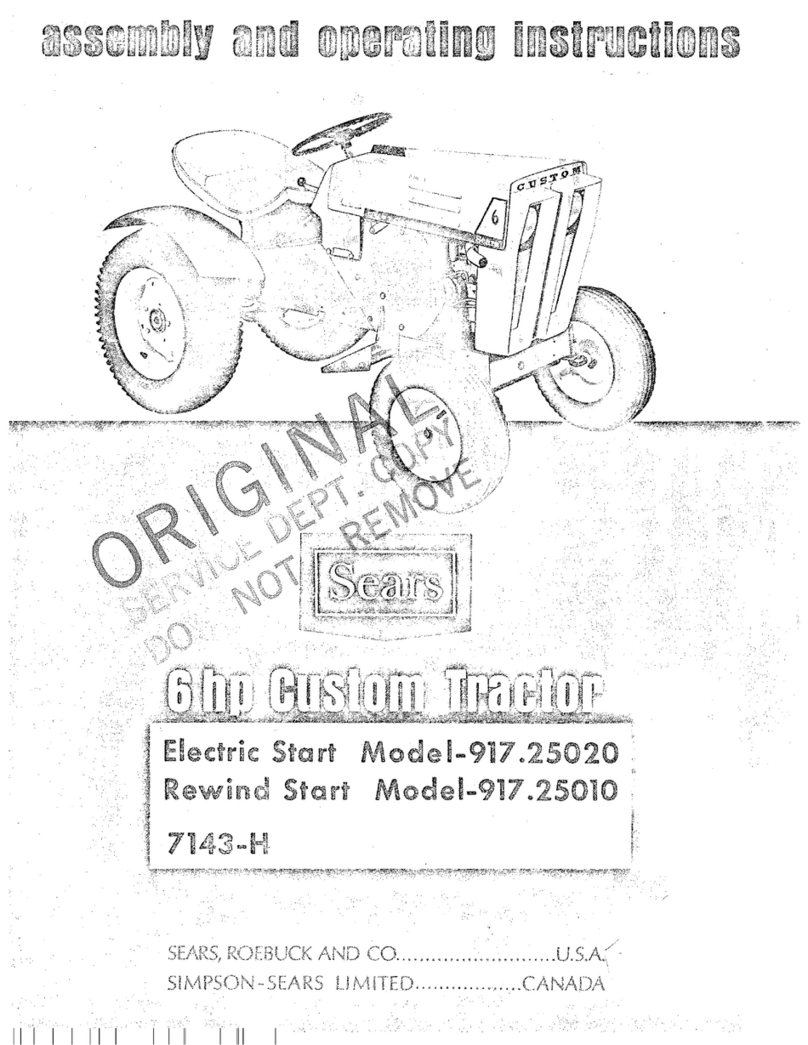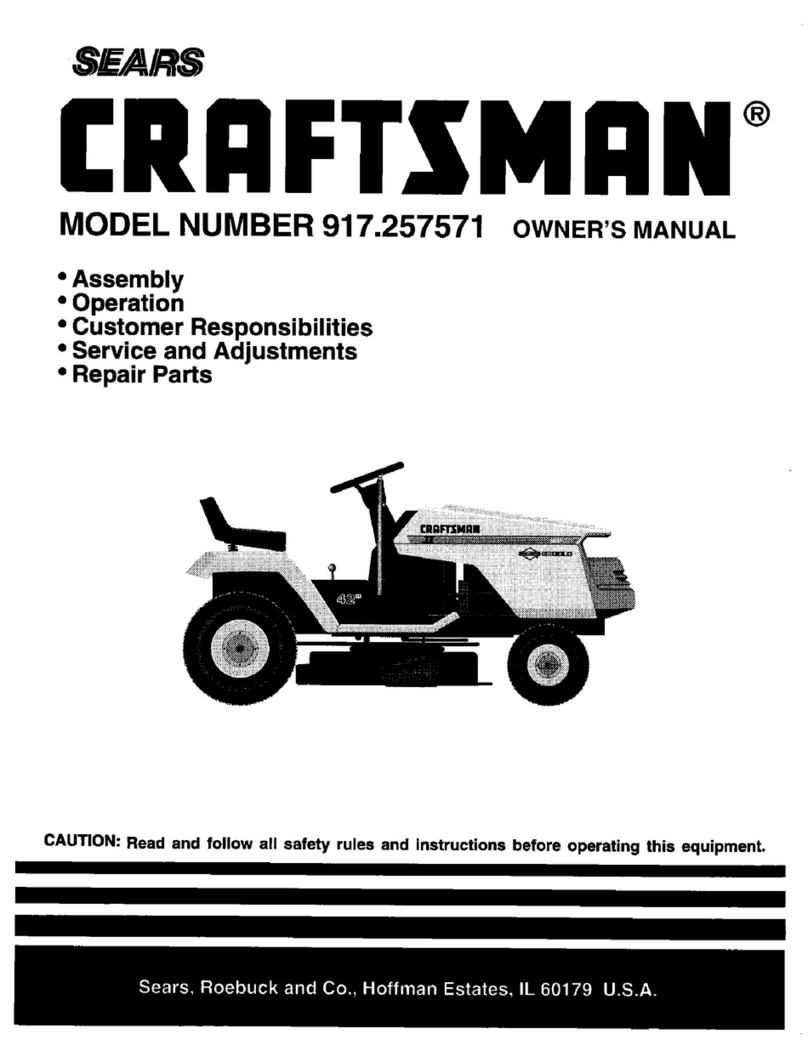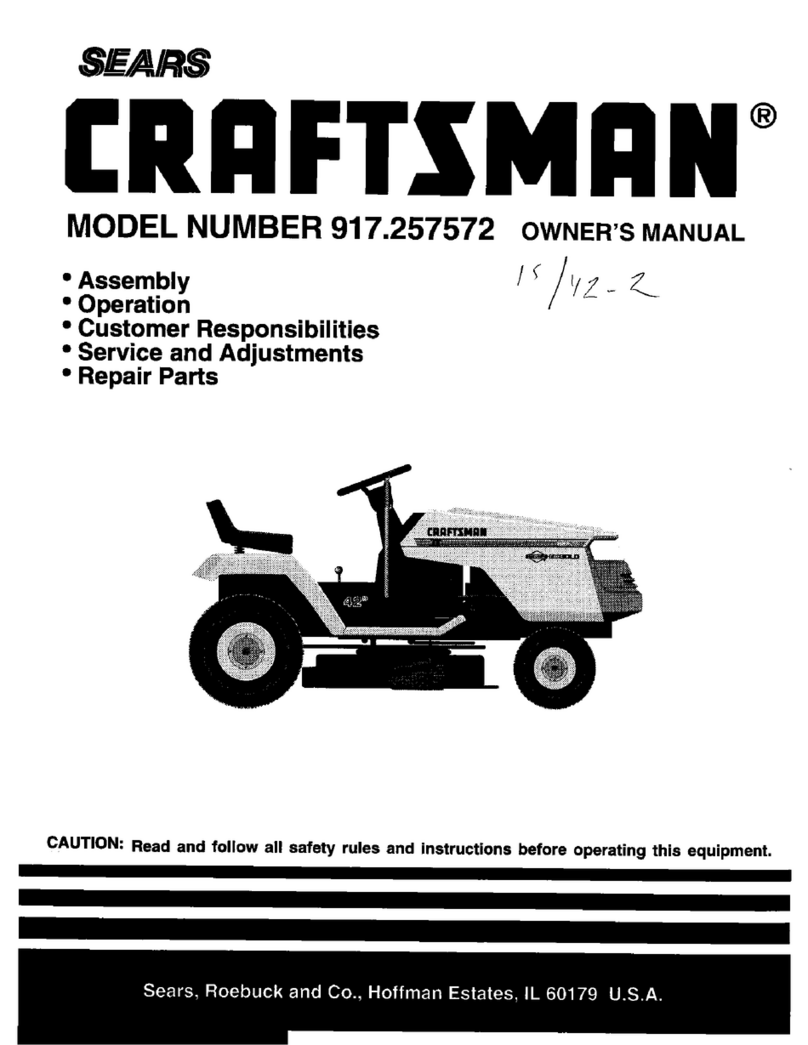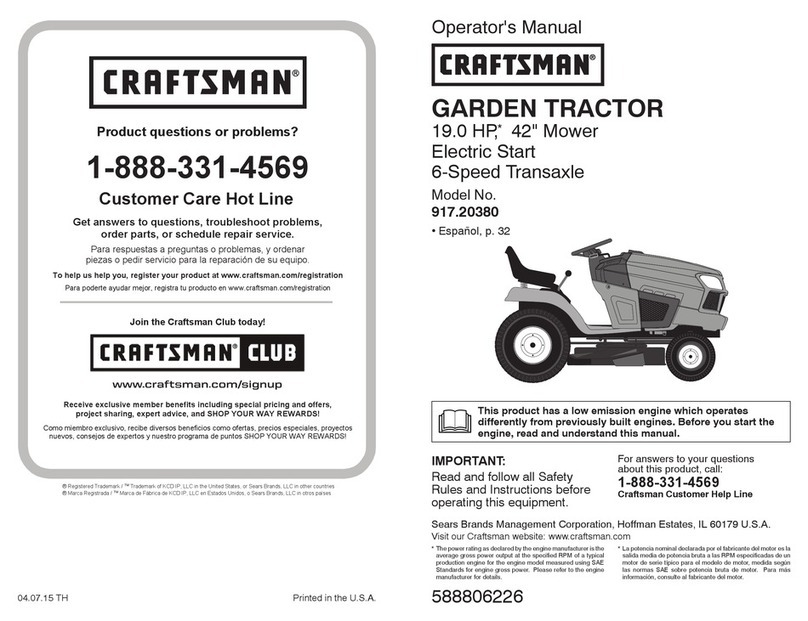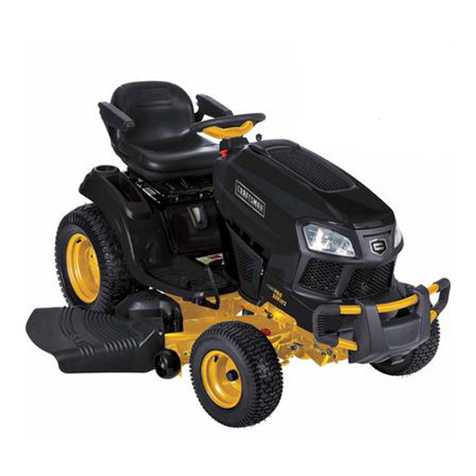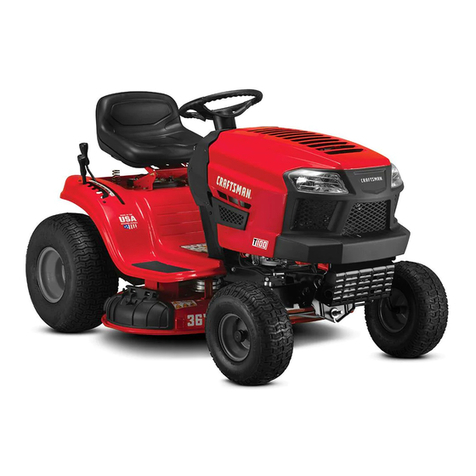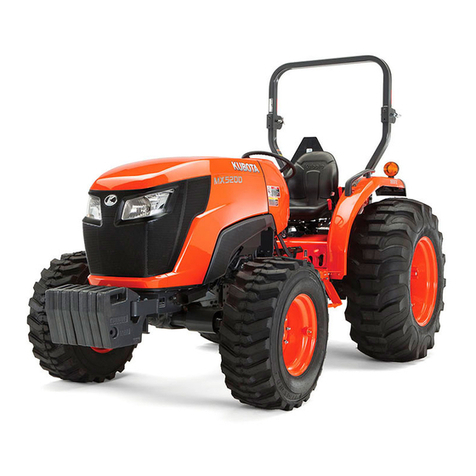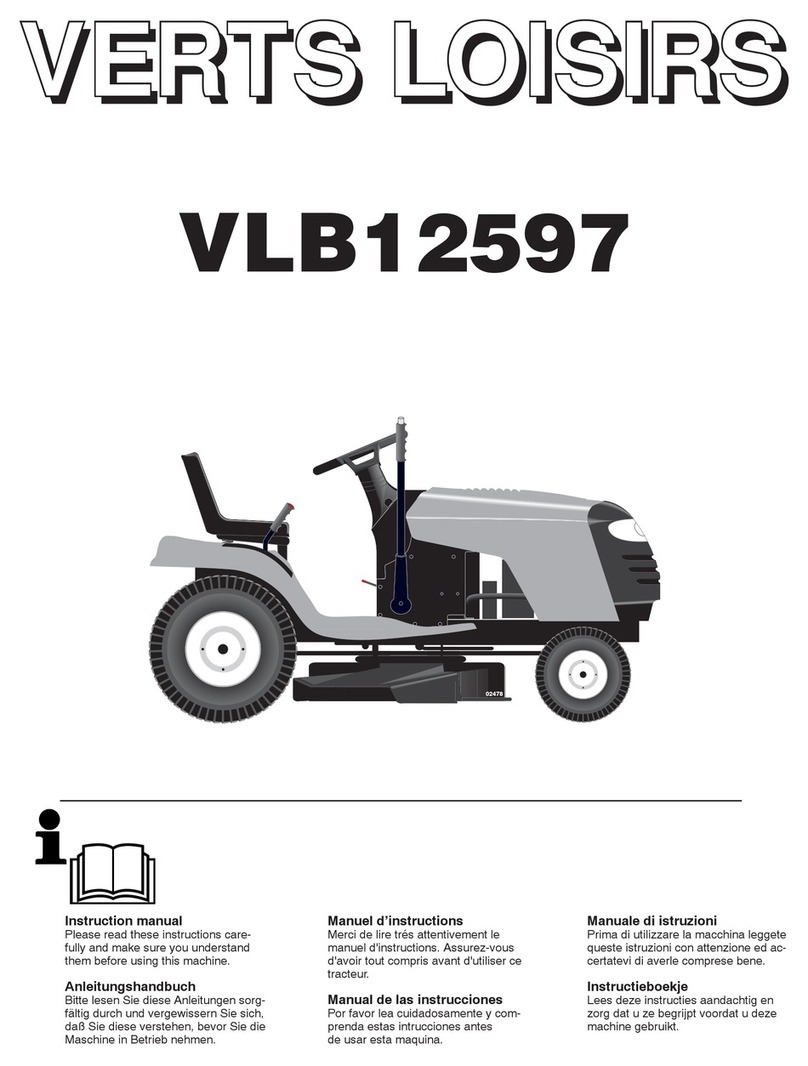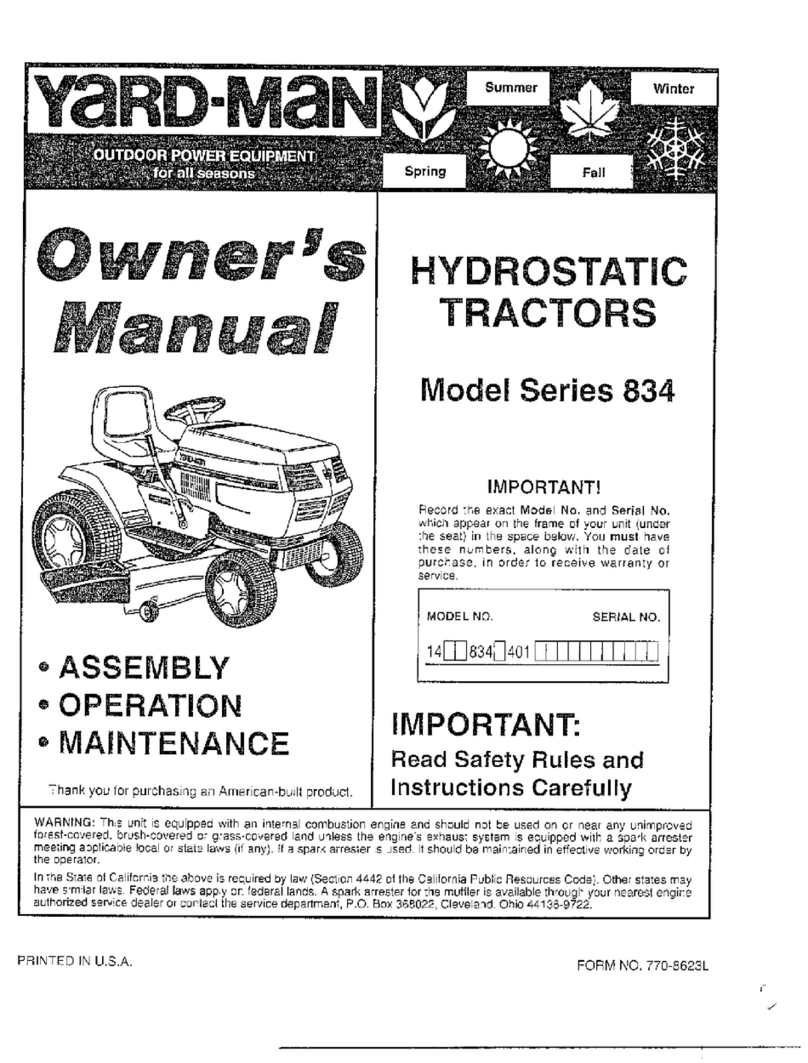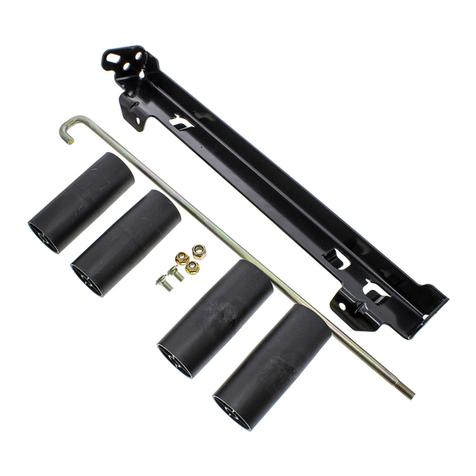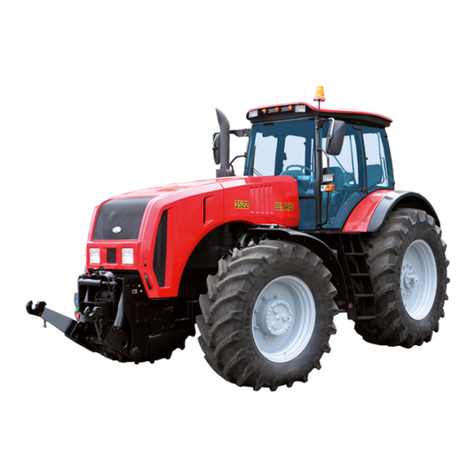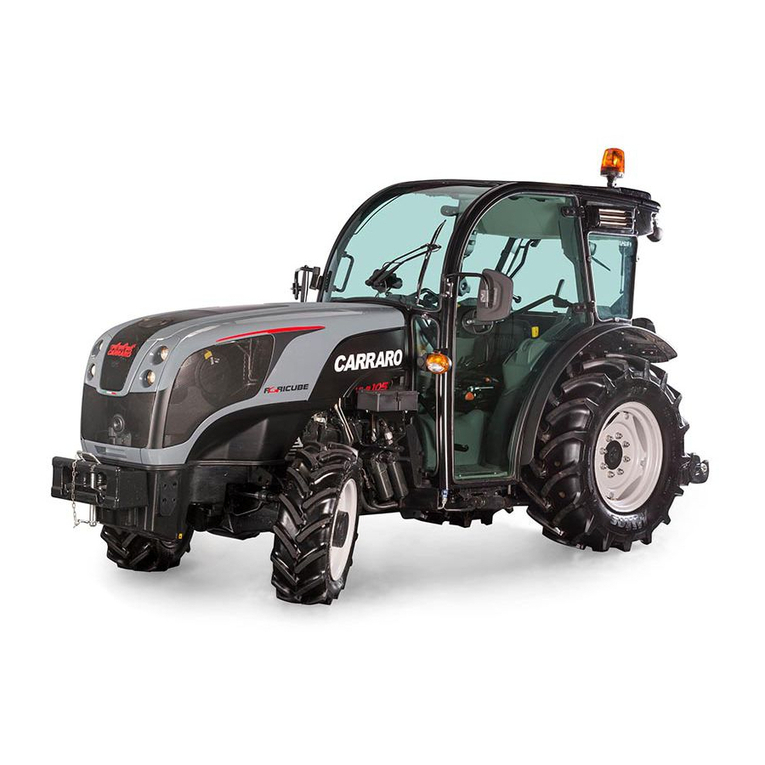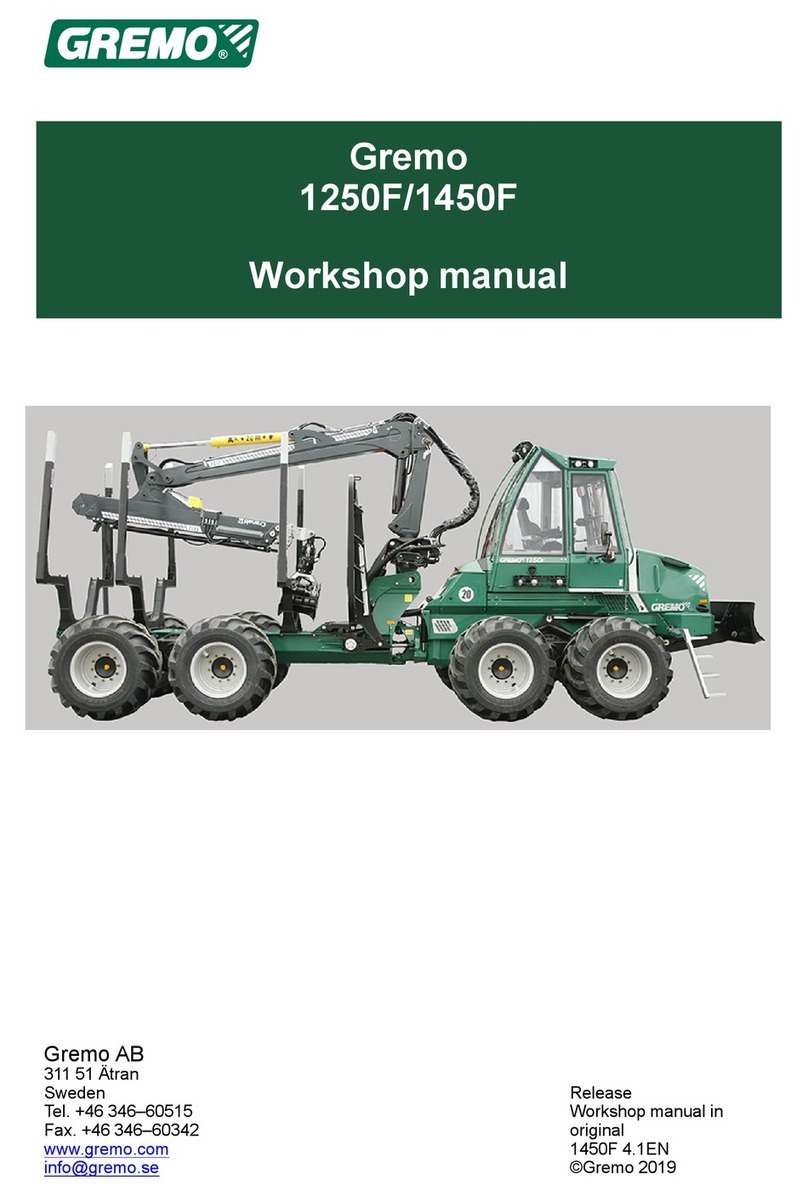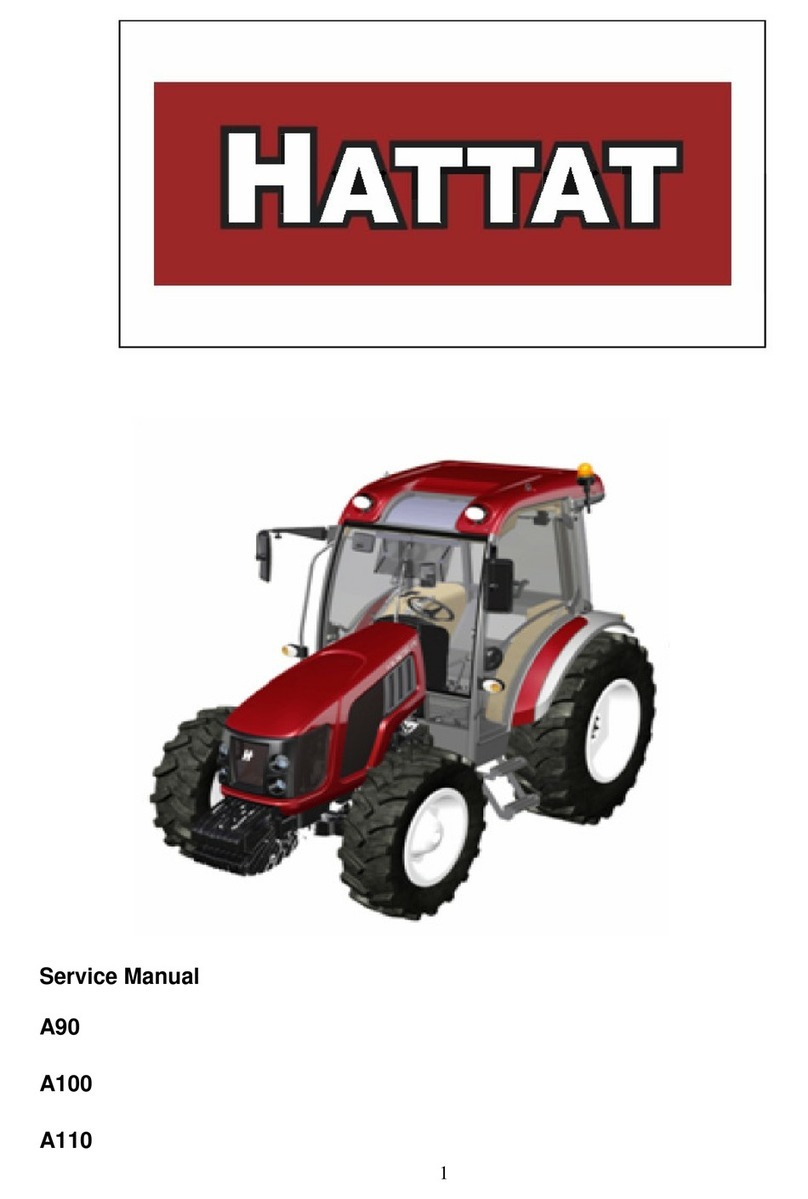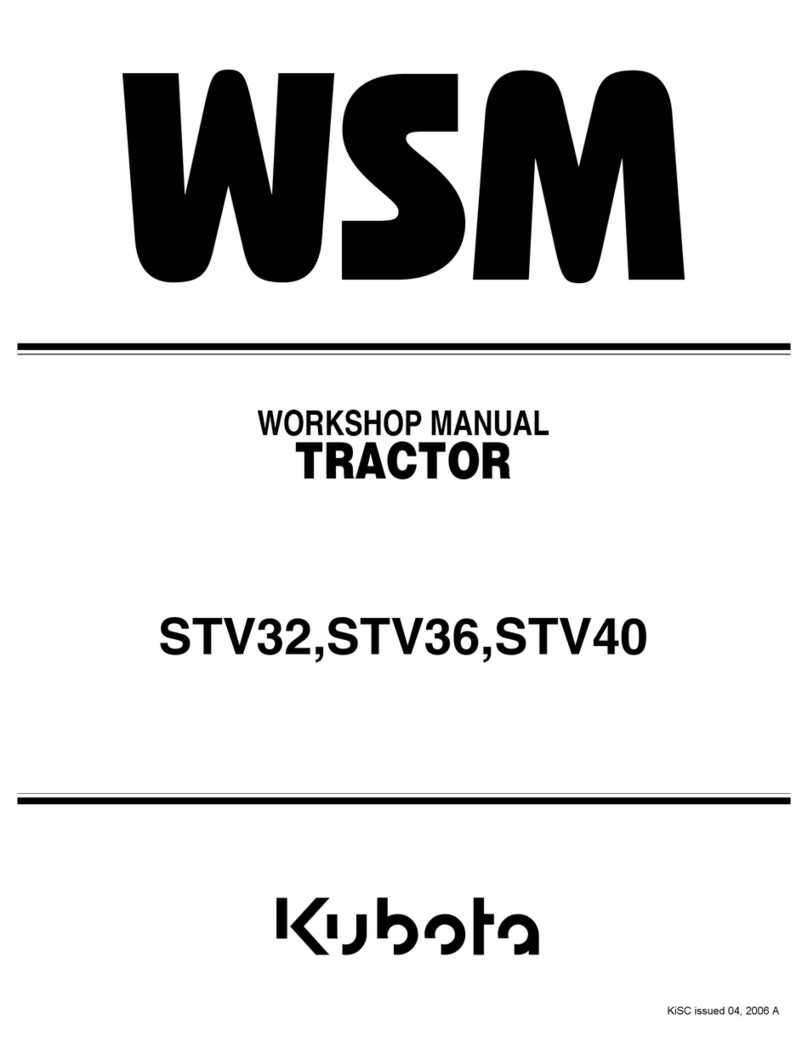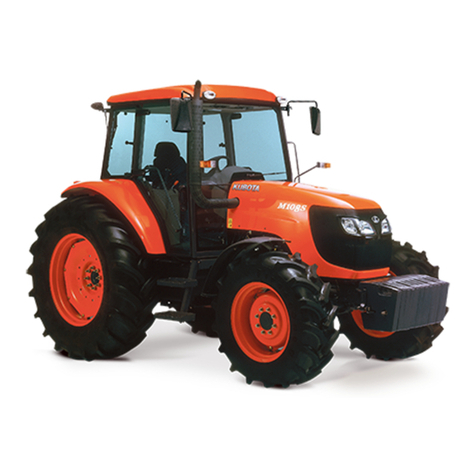
4
SAFETY INSTRUCTIONS
Slow down before turning. Operate the machine smoothly. Avoid•
erratic operation and excessive speed.
Disengage blade(s), set parking brake, stop engine and wait until•
the blade(s) come to a complete stop before removing grass
catcher, emptying grass, unclogging chute, removing any grass or
debris, or making any adjustments.
Never leave a running machine unattended. Always turn off•
blade(s), set parking brake, stop engine and remove key before
dismounting.
Use extra care when loading or unloading the machine into a•
trailer or truck. This machine should not be driven up or down
ramp(s), because the machine could tip over, causing serious
personal injury. The machine must be pushed manually on
ramp(s) to load or unload properly.
Muffler and engine become hot and can cause a burn. Do not•
touch.
Check overhead clearances carefully before driving under low•
hanging tree branches, wires, door openings etc., where the
operator may be struck or pulled from the machine, which could
result in serious injury.
Disengage all attachment clutches and depress the brake pedal•
completely before attempting to start engine.
Your machine is designed to cut normal residential grass of a•
height no more than 10”. Do not attempt to mow through unusually
tall, dry grass (e.g., pasture) or piles of dry leaves. Dry grass or
leaves may contact the engine exhaust and/or build up on the
mower deck presenting a potential fire hazard.
Use only accessories and attachments approved for this machine•
by the machine manufacturer. Read, understand and follow all
instructions provided with the approved accessory or attachment.
For a list of approved accessories and attachments, call 1-800-
659-5917.
Data indicates that operators, age 60 years and above, are•
involved in a large percentage of riding mower-related injuries.
These operators should evaluate their ability to operate the riding
mower safely enough to protect themselves and others from
serious injury.
If situations occur which are not covered in this manual, use care•
and good judgment. Contact 1-800-659-5917 for information and
assistance.
SLOPE OPERATION
Slopes are a major factor related to loss of control and tip-over
accidents which can result in severe injury or death. All slopes require
extra caution. If you cannot back up the slope or if you feel uneasy on
it, do not mow it.
For your safety, use the Slope Guide included as part of this manual
to measure slopes before operating this machine on a sloped or hilly
area. If the slope is greater than 15 degrees as shown on the Slope
Guide, do not operate this machine on that area or serious injury could
result.
Do:
Mow up and down slopes, not across. Exercise extreme caution•
when changing direction on slopes.
Watch for holes, ruts, bumps, rocks, or other hidden objects.•
Uneven terrain could overturn the machine. Tall grass can hide
obstacles.
Use slow speed. Choose a low enough speed setting so that•
you will not have to stop or shift while on the slope. Tires may
lose traction on slopes even though the brakes are functioning
properly. Always keep machine in gear when going down slopes
to take advantage of engine braking action.
Follow the manufacturer’s recommendations for wheel weights•
or counterweights to improve stability. For recommendations, call
1-800-659-5917.
Use extra care with grass catchers or other attachments. These•
can change the stability of the machine.
Keep all movement on the slopes slow and gradual. Do not make•
sudden changes in speed or direction. Rapid engagement or
braking could cause the front of the machine to lift and rapidly flip
over backwards which could cause serious injury.
Avoid starting or stopping on a slope. If tires lose traction, disen-•
gage the blade(s) and proceed slowly straight down the slope.
Do Not:
Do not turn on slopes unless necessary; then, turn slowly and•
gradually downhill, if possible.
Do not mow near drop-offs, ditches or embankments. The mower•
could suddenly turn over if a wheel is over the edge of a cliff,
ditch, or if an edge caves in.
Do not try to stabilize the machine by putting your foot on the•
ground.
Do not use a grass catcher on steep slopes.•
Do not mow on wet grass. Reduced traction could cause sliding.•
Do not attempt to coast downhill. Over-speeding may cause the•
operator to lose control of the machine resulting in serious injury
or death.
Do not tow heavy pull behind attachments (e.g. loaded dump cart,•
lawn roller, etc.) on slopes greater than 5 degrees. When going
down hill, the extra weight tends to push the tractor and may
cause you to loose control (e.g. tractor may speed up, braking and
steering ability are reduced, attachment may jack-knife and cause
tractor to overturn).
